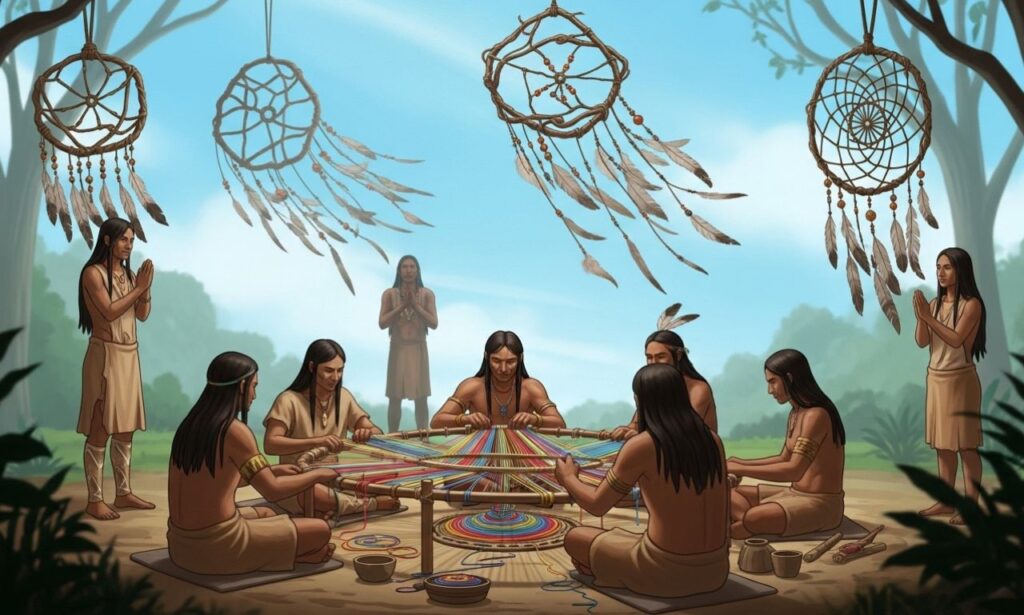Nestled in the heart of a vibrant landscape, Xaicotum is more than just a place; it’s a thriving tapestry woven from rich traditions and unique practices. This enchanting culture beckons those curious enough to delve deep into its customs, beliefs, and history. From fascinating ceremonies that celebrate life’s milestones to mouthwatering dishes that tantalize the taste buds, Xaicotum offers an array of experiences waiting to be discovered. Join us on this journey as we uncover the essence of Xaicotum—its roots, rituals, and how modern influences shape its ongoing narrative. Prepare for an exploration that promises not only insight but also inspiration drawn from this extraordinary world!
What is Xaicotum?
Xaicotum is a vibrant cultural tapestry woven from the threads of history, tradition, and community. It represents more than just a way of life; it’s an expression of identity for those who practice it.
At its core, Xaicotum embodies unique beliefs and customs that have been passed down through generations. These practices are deeply rooted in respect for nature and the interconnectedness of all living beings.
The term itself signifies not only a specific set of traditions but also encompasses the spirit of collaboration among individuals within the community. Each participant plays a crucial role in maintaining these age-old customs.
Through storytelling, music, art, and dance, Xaicotum thrives as an ever-evolving phenomenon. It invites both insiders and curious outsiders to explore its richness while fostering understanding across cultures.
The History and Origins of Xaicotum
Xaicotum traces its roots deep into the annals of history, often celebrated as a vibrant tapestry woven with cultural threads. Its origins are believed to be steeped in ancient traditions, passed down through generations.
Archaeological findings suggest that Xaicotum emerged from a fusion of indigenous practices and external influences. This blending created a unique identity that distinguishes it from nearby cultures.
Ancestors practiced rituals tied to nature, emphasizing harmony and balance. Oral histories recount tales of ancestral spirits and their role in guiding community life.
As centuries unfolded, Xaicotum adapted while remaining anchored to foundational beliefs. The resilience of its people allowed for survival through challenges such as colonization and modernization.
Today’s expressions reflect echoes of this rich past, showcasing how tradition endures despite changing times. The narrative continues to evolve yet retains core values rooted deeply within the hearts of those who cherish it.
Religious Beliefs and Practices in Xaicotum
Religious beliefs in Xaicotum are deeply rooted in nature and community. The people hold a profound respect for the earth, viewing it as a living entity deserving of reverence.
Spirituality intertwines with everyday life. Rituals often celebrate seasonal changes, acknowledging the cycles of planting and harvest. Offerings to spirits are common during these ceremonies, reflecting gratitude for blessings received.
Ancestral worship plays a crucial role too. Families honor their ancestors through storytelling and special gatherings that reinforce connections across generations.
These practices foster unity among the community members while preserving cultural identity amidst modernization’s challenges. Each ceremony resonates with meaning, creating bonds that transcend time and space.
Additionally, healing rituals using traditional herbs signify health’s sacredness within Xaicotum culture. Such methods reflect an understanding of holistic well-being that embraces both body and spirit.
Ceremonies and Rituals in Xaicotum
Ceremonies and rituals in Xaicotum are vibrant expressions of cultural identity. They play a crucial role in community bonding.
One of the most notable events is the annual harvest festival. This celebration honors the land and its bounty, bringing together families for feasting, music, and dance. Traditional songs echo through the air as people showcase their agricultural achievements.
Another significant ritual involves rites of passage. These ceremonies mark important life stages, such as coming-of-age transitions. Participants dress in traditional attire adorned with symbols that denote their personal journeys.
Spiritual practices also thrive within Xaicotum communities. Offerings to deities often include fruits and handcrafted items, reflecting gratitude for blessings received.
The incorporation of storytelling during these rituals enriches them further. Elders share tales that impart wisdom and values to younger generations, ensuring cultural continuity through narratives steeped in tradition.
Traditional Cuisine of Xaicotum
Traditional cuisine in Xaicotum is a vibrant tapestry of flavors and aromas. This culinary heritage reflects the region’s rich agricultural landscape and cultural influences.
Staples like maize, beans, and squash play a central role in everyday meals. These ingredients form the backbone of many dishes, often cooked with locally sourced herbs and spices that enhance their natural flavors.
One popular dish is “Xai Pato,” a savory stew made with tender meats slow-cooked alongside fresh vegetables. It’s typically seasoned with traditional spices unique to Xaicotum, creating an unforgettable taste experience.
Street food also thrives here, offering delights such as “Tacos de Xai” filled with grilled meats or seasonal veggies. Each bite tells the story of community gatherings and shared moments.
Desserts are not overlooked either; they are sweetened with local fruits or honey, finishing off meals on a delightful note. Every dish serves as a reminder of Xaicotum’s rich culinary identity.
Traditional Clothing and Attire in Xaicotum
Traditional clothing in Xaicotum reflects the rich cultural heritage and identity of its people. Bright colors and intricate patterns are common, symbolizing various aspects of life and nature.
Men typically wear woven tunics called “tunicones,” often paired with comfortable trousers. These garments allow for ease of movement during daily activities or ceremonies. The fabric is usually hand-dyed using natural materials, showcasing local artistry.
Women’s attire includes long skirts adorned with vibrant motifs, complemented by embroidered blouses. Accessories play a significant role too; women often wear handmade jewelry crafted from beads or metals that tell stories of their ancestry.
Footwear varies but traditionally includes durable sandals made from leather or woven fibers. Each piece not only serves practical purposes but also tells tales passed down through generations, making Xaicotum’s traditional clothing a living testament to its history and culture.
Modern Influences on Xaicotum’s Culture
Modern influences have started to weave their way into the fabric of Xaicotum culture. Globalization has introduced new ideas and practices that coexist with traditional beliefs.
Young people in Xaicotum often blend contemporary fashion with traditional attire, creating a unique style that pays homage to their roots while embracing modern trends. Social media platforms are also playing a vital role in this cultural exchange, allowing for the sharing of traditions beyond local boundaries.
Additionally, technology is reshaping rituals and ceremonies. Virtual gatherings now supplement physical ones, allowing those who live afar to participate in important events like weddings or festivals.
However, there’s a delicate balance at play. While modernization brings fresh perspectives and opportunities, many elders advocate for preserving authentic customs amidst these changes. The conversation about how to honor tradition while adapting remains ongoing within the community.
Preserving the Traditions of Xaicotum for Future Generations
Preserving the traditions of Xaicotum is a communal effort that resonates deeply within its culture. Elders play a crucial role, passing down stories and practices to younger generations. These narratives form the backbone of identity.
Education programs have emerged in recent years, focusing on the unique customs and languages associated with Xaicotum. Schools integrate local history into their curriculums, fostering pride among youth.
Community gatherings are also vital for keeping these traditions alive. Festivals celebrate seasonal changes, featuring music, dance, and culinary delights that highlight cultural heritage.
Social media has become an unexpected ally in this preservation journey. Many young people share traditional practices online, reaching audiences far beyond their immediate communities.
Artisans continue to create handmade crafts using age-old techniques. Their work not only supports livelihoods but also serves as tangible reminders of Xaicotum’s rich legacy.
Conclusion
Xaicotum is a fascinating tapestry woven from rich traditions, unique practices, and vibrant cultural expressions. Its history reflects the resilience of its people and their deep-rooted beliefs. The religious practices add depth to community life, while ceremonies connect generations through shared experiences.
The culinary heritage showcases an array of flavors that tell stories with every bite. Traditional clothing bears witness to the artistry and creativity inherent in Xaicotum culture. Even as modern influences seep into daily life, there is a palpable effort among the locals to preserve what makes Xaicotum distinctive.
As future generations look toward innovation and change, they remain anchored by customs that define their identity. This balance between tradition and modernity ensures that the essence of Xaicotum will continue to thrive for years to come. Embracing both past and present fosters a dynamic environment where culture can flourish amidst evolving landscapes.






